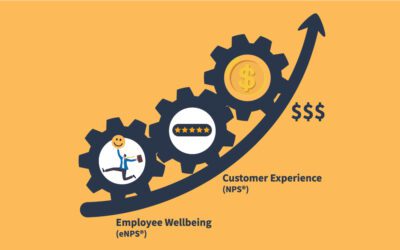Discover the Magic of Hyperbaric Oxygen Therapy: Unveiling the Profound Health Benefits


Grant Ian Gamble is a best-selling mindful leadership author and speaker. He has over 30 years of experience in leading teams to create innovative customer experiences, building engaged workforces, and developing leaders who prioritize mindfulness in their approach.
Hyperbaric oxygen therapy (HBOT) is a medical treatment that involves breathing in pure oxygen while in a pressurized chamber. This treatment has gained popularity in recent years as a complementary therapy for various health conditions. In this article, we will explore what hyperbaric oxygen therapy is and the benefits it offers.
What is Hyperbaric Oxygen Therapy?
Hyperbaric oxygen therapy involves the use of a pressurized chamber to deliver high concentrations of oxygen to the body. During the treatment, the patient lies down inside the chamber and breathes in pure oxygen. The pressure inside the chamber is increased to up to three times the normal atmospheric pressure, which allows the oxygen to dissolve into the bloodstream at a much faster rate.
This increased oxygen delivery to the body has a range of benefits, including improved wound healing, reduced inflammation, and enhanced immune function. Hyperbaric oxygen therapy has been used to treat a variety of health conditions, including carbon monoxide poisoning, decompression sickness, and diabetic foot ulcers.
Benefits of Hyperbaric Oxygen Therapy
- Improved Wound Healing
Hyperbaric oxygen therapy can significantly improve wound healing by increasing the oxygen supply to the affected area. This increased oxygen delivery promotes the growth of new blood vessels and enhances the production of collagen, which are both crucial for wound healing.
- Reduced Inflammation
Hyperbaric oxygen therapy has been shown to reduce inflammation in the body. This is because the high concentrations of oxygen delivered during the treatment can reduce the production of inflammatory molecules and increase the activity of anti-inflammatory cells.
- Enhanced Immune Function
Hyperbaric oxygen therapy can enhance the function of the immune system by increasing the production of white blood cells. This can help the body fight off infections and promote healing.
- Neurological Benefits
Hyperbaric oxygen therapy has been shown to have neuroprotective effects, which means it can protect the brain from damage caused by a lack of oxygen. This treatment has been used to treat conditions such as traumatic brain injury, stroke, and cerebral palsy.
- Anti-Aging Effects
Hyperbaric oxygen therapy has been shown to have anti-aging effects by increasing the production of collagen and reducing the production of free radicals. This can help to reduce the appearance of fine lines and wrinkles and promote overall skin health.
Hyperbaric oxygen therapy is a safe and effective medical treatment that offers a range of benefits for various health conditions. This treatment can improve wound healing, reduce inflammation, enhance immune function, provide neurological benefits, and have anti-aging effects. If you are considering hyperbaric oxygen therapy, it is important to consult with your healthcare provider to determine if it is a suitable treatment option for your specific condition.
Your Ultimate Recovery Guide: Unlocking the Secrets to Peak Performance, Health and Well-being

Put PEOPLE FIRST, ALWAYS and watch your business flourish.
Dive deep into the latest trends in customer experience and team engagement, mindful leadership and management. Discover practical tools and strategies that you can use to build a people-centric culture, the foundation for sustainable long-term business growth and success.
Led by mindful leadership expert, Grant Ian Gamble, a best-selling author and true visionary with over 30 years of experience in leading teams to create innovative customer experiences, building engaged, inspired and fulfilled workforces, and developing leaders who prioritize genuine connection in their approach.
The guiding principle behind all of Grant’s work is PEOPLE FIRST, ALWAYS.
More Articles:
Is Elon Musk Wrong?
Elon Musk famously said, “Empathy is not an asset”.
Musk learned this from the video game Polytopia, which he played with his brother, coworkers, and partners. He made a list of life lessons from the game, which he calls Polytopia Life Lessons.
Musk’s indifference to empathy is not isolated when you look at notoriously ruthless business leaders such as Jeff Bezos, Bill Gates, and Steve Jobs. They have all had difficulties with interpersonal dynamics and yet been incredibly successful by the mainstream’s definition of success.
Embrace Workplace Wellbeing: Navigate Stress, Anxiety, Overwhelm and Burnout with AFFINITY OS’s™ NEW Psychosocial Risk (PSR) Management Tool
A state of stress, anxiety, overwhelm and burnout feels almost endemic these days. I hear it from friends, family members, work mates and peers. The pressures seem to come from all directions—work, media, global events, and personal life demands. Everywhere you turn, there’s more information, more conflict, more polarization, more uncertainty and it feels as if it’s escalating, relentlessly. This growing sense of overwhelm isn’t just affecting individuals; it’s affecting entire organizations, from the mental wellbeing of team members and tenure to overall workplace productivity.
Why Sales May Seem Easier Than Retention in the Fitness Industry
In the fitness industry, sales often grab the spotlight due to their immediate results and clear metrics, like quick sign-ups and instant revenue boosts. However, as industry leaders, it’s crucial to understand why retention might seem less controllable but is equally vital for sustainable success.
Fill out the form below and receive a PDF download of "6 Key Strategies to Engage Untapped Fitness and Wellness Market Segments"
Let's Connect!
CUSTOMER EXPERIENCE, TEAM ENGAGEMENT & WORKPLACE WELL-BEING: AFFINITY OS™ | WELLNESS INTEGRATION | MINDFUL LEADERSHIP: "THE AFFINITY PRINCIPLE"
0475 866 592

The Affinity Principle™ by Grant Gamble presents a formula for business success through a people-centric, mindful leadership approach.
PEOPLE FIRST, ALWAYS.





